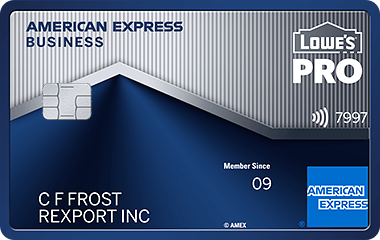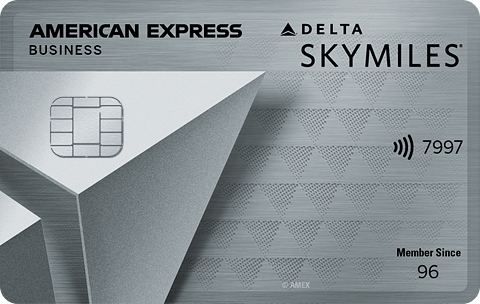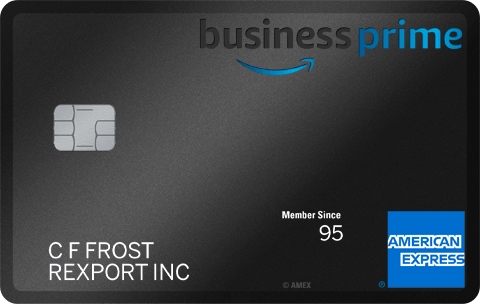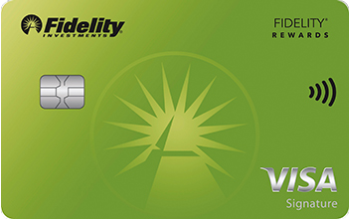- myFICO® Forums
- Types of Credit
- Credit Cards
- Re: I'm waiting for a 4% anywhere card with no/low...
- Subscribe to RSS Feed
- Mark Topic as New
- Mark Topic as Read
- Float this Topic for Current User
- Bookmark
- Subscribe
- Mute
- Printer Friendly Page
I'm waiting for a 4% anywhere card with no/low AF
Is your credit card giving you the perks you want?
Browse credit cards from a variety of issuers to see if there's a better card for you.
- Mark as New
- Bookmark
- Subscribe
- Mute
- Subscribe to RSS Feed
- Permalink
- Report Inappropriate Content
Re: I'm waiting for a 4% anywhere card with no/low AF
If one is looking for instant gratification and no threshold it may be worth it to give up 1/2 a percent and go with the QuickSilver or keep the 2% when redeeming for travel and pick up the CapOne Venture (although it comes with a $95 AF).
- Mark as New
- Bookmark
- Subscribe
- Mute
- Subscribe to RSS Feed
- Permalink
- Report Inappropriate Content
Re: I'm waiting for a 4% anywhere card with no/low AF
@Loquat wrote:
If one is looking for instant gratification and no threshold it may be worth it go give up 1/2 a percent and go with the QuickSilver or keep the 2% when redeeming for travel and pick up the CapOne Venture (although it comes with a $95 AF).
Chase cards under UR program also work as well. Some say it's blamephous to redeem points for cash but between re-vamped Unlimited and Flex/Freedom for quarterly categories you can make the case those are the only two cards you need for simplicity with no AF
- Mark as New
- Bookmark
- Subscribe
- Mute
- Subscribe to RSS Feed
- Permalink
- Report Inappropriate Content
Re: I'm waiting for a 4% anywhere card with no/low AF
@Remedios wrote:
Lenders don't keep minimum redemption treshold a secret, so it's really not hard to figure out ahead of time.
Not sure I can easily find the $25 minimum (and especially $25 increments) on the USAlliance site. So, sadly, I disagree, unless we have a different definition of "hard"
- Mark as New
- Bookmark
- Subscribe
- Mute
- Subscribe to RSS Feed
- Permalink
- Report Inappropriate Content
Re: I'm waiting for a 4% anywhere card with no/low AF
@Remedios wrote:Time for unpopular opinion..
Minimum redemption isn't the issue, *inadequate* spend on cards that have it is.
If one has a dedicated card for everything (gas, groceries, candy bars, tarot cards), spend it diluted, and it might be hard to reach minimum redemption amount in what would be considered reasonable amount of time.
If spend put on a card was sufficient, one could redeem monthly if the wished to do so.
That should be part of the pre-app homework "Will this reward system work for me, and am I fine waiting six months to redeem"
Lenders don't keep minimum redemption treshold a secret, so it's really not hard to figure out ahead of time.
I see your point and do agree with you to a certain extent but the point is not that we didn't know about it in advance because most of us obviously did. It's the point that we will choose another card that doesn't have a minimum redemption over a similar one that does. Even if I put all of my current average monthly spend on a single 3% card it would take me almost 5 months to be able to redeem my cash back on a $50 threshold card. I'm going to choose cards with lower thresholds if they're available.
Some of us were spending a lot more money when we got our cards and found that redemption thresholds were not a problem but have since shifted priorities from spending to saving now, myself included. Just like the credit card companies themselves, what was the case when we applied for a card may not be the case in the present.
There really is no good reason to have minimum redemption thresholds other than to make it harder for people to get the cash back they earned in hopes they'll either spend more to get to the threshold, forget about it, or break some terms that allows the creditor to close the account or otherwise void the cash back earned. We should all be very vocal about this consumer unfriendly policy many of these FIs have because it has no benefit to anyone but them.
- Mark as New
- Bookmark
- Subscribe
- Mute
- Subscribe to RSS Feed
- Permalink
- Report Inappropriate Content
Re: I'm waiting for a 4% anywhere card with no/low AF
There is a very good reason for minimum redemption treshold if you're a lender, it ensures card gets used, or rewards cannot be redeemed.
- Mark as New
- Bookmark
- Subscribe
- Mute
- Subscribe to RSS Feed
- Permalink
- Report Inappropriate Content
Re: I'm waiting for a 4% anywhere card with no/low AF
@Remedios wrote:There is a very good reason for minimum redemption treshold if you're a lender, it ensures card gets used, or rewards cannot be redeemed.
Like I said, it's only good for them. Clearly cards that don't force such redemption thresholds on their customers are doing just fine so it's not some existential threat to make it easy to redeem any amount of rewards.
- Mark as New
- Bookmark
- Subscribe
- Mute
- Subscribe to RSS Feed
- Permalink
- Report Inappropriate Content
Re: I'm waiting for a 4% anywhere card with no/low AF
@Anonymous wrote:
@Remedios wrote:There is a very good reason for minimum redemption treshold if you're a lender, it ensures card gets used, or rewards cannot be redeemed.
Like I said, it's only good for them. Clearly cards that don't force such redemption thresholds on their customers are doing just fine so it's not some existential threat to make it easy to redeem any amount of rewards.
I'm sure there is a formula somewhere that shows how much a minimum redemption effects the actual % cashback the average customer receives. Higher minimum redemptions ultimately means less total average cash back across all of the cards' customers. So for a 2% card the average total % cash back the bank pays across all customers might be something like 1.8% if there is no minimum redemption value/increment at all, but closer to 1.5% if the minimum redempion is $50 and in $25 increments.
I think this is text book definition of breakage and can happen in a lot of different ways, but I'm not an expert. I'm going to go into a lot of over-thinking about credit card reward programs, sorry for this in advance, but this is a hobby I really like and probably think about a little too much.
From what I can figure out about CC rewards programs the ones that automatically apply it to payment during checkout suffer the least breakage. An example would be the Target Red card which as far as I know gives the most straightforward and full cash back reward. Not only does it give you 5% off instantly in your purchase price during checkout, but this applies to the total price before sales tax is applied. So you get taxed on the sale price after the 5% reduction has already been applied. This is different from a card like the Amex Amazon Prime Business card that will also be used to reduce your purchase price, but only after sales tax has been applied. For the Target card you are paying 5% less of the sales tax, whereas for Amazon you are paying the full sales tax.
After those that are applied directly to purchases like store cards, CC's that automatically apply to monthly statement credit suffer the least breakage. It is almost instant, automatic, no value lost to inflation, and there is no lost "opportunity time" for using that money to make interest on it or use/spend it somewhere else. An example would be the AOD 3% card which does it this way and some people have an issue with not being able to save up the rewards, but financially it is always best to just apply as fast as possible to any outstanding balance and never carry a rewards balance. Any reward system that requires you to bank up a certain amount before being able to be redeemed is saving money by structuring it this way.
I would really like to see a chart that lays out cost/benefit analysis of different CC rewards programs. Something like Amex MR you never actually affect Amex's book until you redeem and even then they make you pay excise tax for some stuff and they get kickbacks from transfer partners, etc... I really wonder what 1MR actually costs Amex on average across all customers? Some people never use them, some people use them on bad redemptions, money is always losing value to inflation and opportunity cost from not being invested. Some people don't use them for 10 years at which point Amex might've made 50% back on just investing that money in something more profitable. Even when you hear of really valuable redemptions of MR most of the time the Airline/Hotel are eating most of that x3/4/5/6 valuation, not Amex. This is because they are first transferred for a certain value at usually ~$.01:whatever_partner_currency_value_closest_to_$.01 (sometimes better during sales) and then redeemed for a certain value (usually where the real value comes in like SkyMiles for Delta One international flights at 1Skymile:$.04 or so).
More in line with this thread, I want to throw it out there that the US Bank Altitude Reserve is a 4.5% value card under the right circumstances. The stipulations are that:
- You can redeem US Bank Alitude Reserve reward points through either Real-Time Rewards or their portal for x1.5 redemption value in a reasonable time frame
- You can use the $325 annual travel credit with organic spend
- You use it for Mobile Wallet purchases with your phone with apps like Samsung/Apple/Google Pay (even better with a Samsung Galaxy phone with Magnetic Stripe Technology so that it can be used even on non-Contactless/non-NFC terminals)
- You have enough Mobile Wallet/Travel spend at 4.5% to offset the effective $75 annual fee after the travel credit. It takes $5k annual spend to make it equal to a standard 3% card (4.5-3=1.5, 5000*.015=75), anything over that it makes sense from a stricly financial view
- You can get the card since US Bank now has the most conservative of all policies regarding new cards (no more than 1 credit account in the last 12 months)
I know it doesn't fit the 4% flat cash back no-AF unicorn that is being talked about in this thread, but the US Bank AR can be better than that if the consumers spending profile fits a certain pattern. I do find it interesting that the AR point reward system is one of those that really motivates you to use it for as much spend as you can because the way it is setup you have to bank up rewards to really use them. There are minimum redemptions for RTR and you can only use RTR if you have enough to cover the full purchase price of whatever travel it is you are buying. It is one of the worst as far as forcing breakage because there are minimum redemptions AND restrictions on how you can spend them. You will almost always have to leave some on the table when you redeem because you can't use them for half purchases.
I will admit that this does influence my purchasing decisions because I want to get as many as I can in order to be able to use them. Examples being that I use Samsung Pay on my phone at Target even though I have a Target Red card in the Debit version (only .5-6% difference like discussed above) and eating out if I have the option (.5% difference from Vantage West card I have).
I often think what total % cash back I would average out to if I just used the Altitude Reserve for everything, whether it was eligible for Mobile Wallet or not? I bet it would average out to close to or above 3% while having the simplicity of just using one single card and not having to juggle accounts and worry about optimizing each card for each purchase. Probably worth the peace of mind! Question then becomes do you pay the AF for a Visa Infinite from a National bank or go with the 3% standard from a random non-local Credit Union?
Along with every other member of this board that holds the card I've been paranoid that US Bank is going to change the way the AR accumulation/redemptions work. If I had a guarantee it would stay the way it is for 10 years I would close all my other cards and just be lounging at ~ 4% overall with just one card.








- Mark as New
- Bookmark
- Subscribe
- Mute
- Subscribe to RSS Feed
- Permalink
- Report Inappropriate Content
Re: I'm waiting for a 4% anywhere card with no/low AF
@digitek wrote:
It takes $5k annual spend to make it equal to a standard 3% card (4.5-3=1.5, 5000*.015=75),
Standard 3% card? So, like AOD? They're the standard? Maybe some BofA cards if you have Platinum Honors?
I'd say 2% is much more like "standard".
- Mark as New
- Bookmark
- Subscribe
- Mute
- Subscribe to RSS Feed
- Permalink
- Report Inappropriate Content
Re: I'm waiting for a 4% anywhere card with no/low AF
@notmyrealname23 wrote:
@digitek wrote:
It takes $5k annual spend to make it equal to a standard 3% card (4.5-3=1.5, 5000*.015=75),
Standard 3% card? So, like AOD? They're the standard? Maybe some BofA cards if you have Platinum Honors?
I'd say 2% is much more like "standard".
I can dig that feedback. AOD and US Alliance kind of set a new standard for baseline cash back and they are both somewhat hard to qualify for so maybe not the best examples to use in this analysis. Although, the math against a 2% card is even more in favor of AR at only $3k in annual spend on Mobile Wallet/Travel to earn more (4.5%-2%-2.5%, 3000*.025=75).








- Mark as New
- Bookmark
- Subscribe
- Mute
- Subscribe to RSS Feed
- Permalink
- Report Inappropriate Content
Re: I'm waiting for a 4% anywhere card with no/low AF
@digitek wrote:I know it doesn't fit the 4% flat cash back no-AF unicorn that is being talked about in this thread, but the US Bank AR can be better than that if the consumers spending profile fits a certain pattern. I do find it interesting that the AR point reward system is one of those that really motivates you to use it for as much spend as you can because the way it is setup you have to bank up rewards to really use them. There are minimum redemptions for RTR and you can only use RTR if you have enough to cover the full purchase price of whatever travel it is you are buying. It is one of the worst as far as forcing breakage because there are minimum redemptions AND restrictions on how you can spend them. You will almost always have to leave some on the table when you redeem because you can't use them for half purchases.
Not quite your point, but I think you can with the portal though, right (points + cash)? (Still not sure why RTR is quite so important to some, I get the portal isn't great, but....)